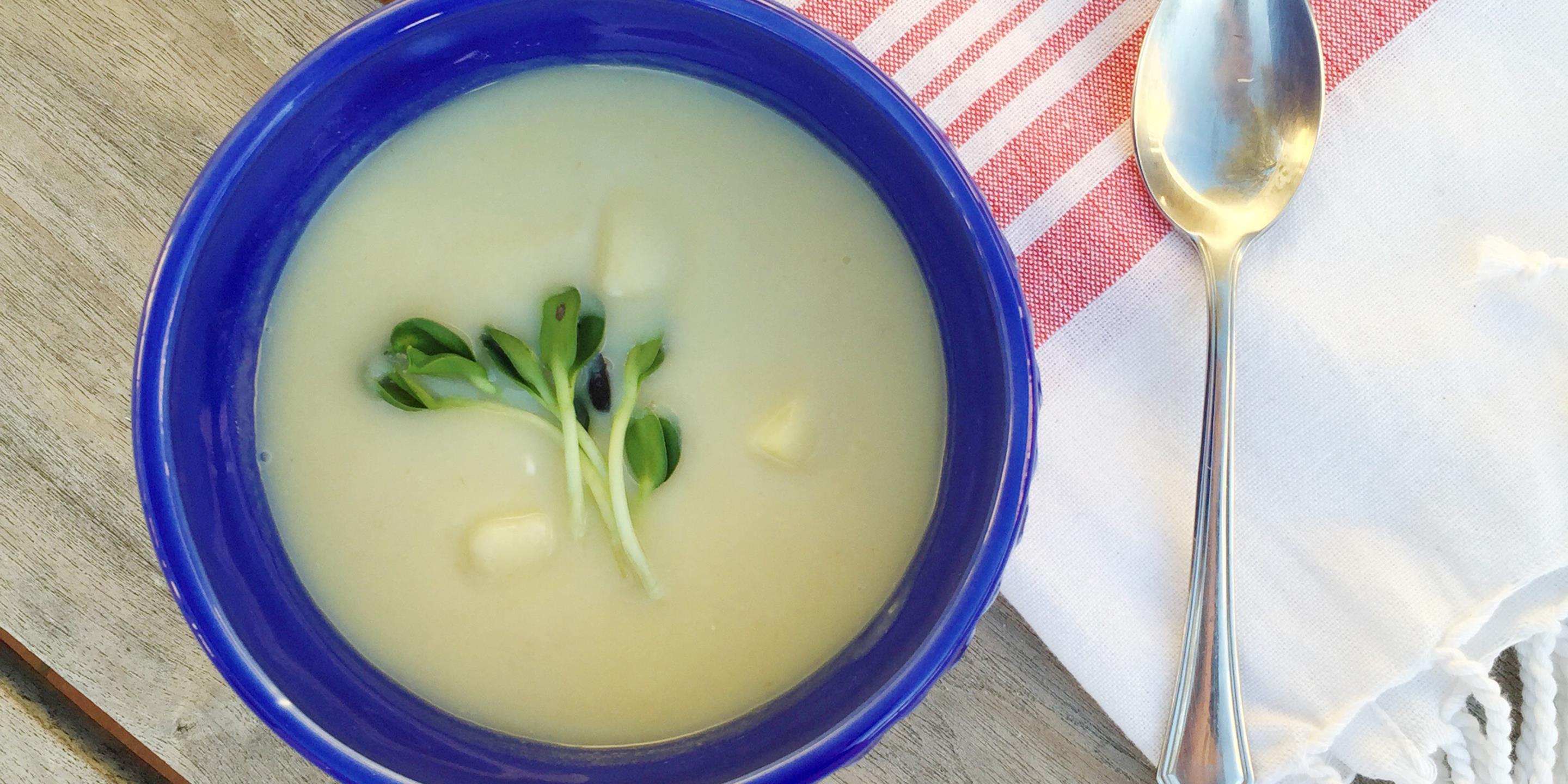The upsides and obstacles of the less-rigid relative of the juice cleanse.
For at least a decade, nutritionists have been getting hot under the collar over high-sugar, fiber-less juice cleanses, yet it remains a fixture among the health-conscious set. Juice cleanses claim to draw out toxins lurking in the digestive tract, make you feel like a million bucks and gain a new level of perspective on your solid food habits. The unspoken reason people do it is the quick weight loss, since the sum calories of the juices is often fairly low. The 2.0 of all this is the soup cleanse. Because they retain fiber, the thought is, soup is more filling and better for our bodies, yet fulfills our desire for a reset. Which is true….mostly. Here’s what the experts say on this hot trend.
THE UPSIDES:
The fiber’s a game-changer.
A recap on why juice cleanses are bad for you: “With juicing you’re getting high sugar, usually without fiber, so your body goes into starvation-mode faster,” says Wesley Delbridge, RD, a nutritionist and spokesperson for the American Academy of Nutrition and Dietetics. This prompts your body to store calories as fat, which is the opposite goal. Said simply, the reason an apple is good for you and a glass of apple juice isn’t is because an apple’s fiber regulates the fruit’s sugar in your bloodstream. And the bulk fills you up. Out of the gate, souping has a lead on juice cleanses, according to nutritionists.
This is no cabbage soup diet.
One of the toughest parts of a short-term, strict regimen is the lack of variety and tastiness. Not so with soup cleanses. Take Los Angeles-based Soupure, where people can choose from one, three or five days’ worth of gluten-free, plant-based soups, broths, smoothies and “elixirs”—eight in total. (They’ve just started national delivery of their one-day plans.) There’s variety in the flavor profile, the temperature and texture (a strawberry smoothie for breakfast is followed shortly by a spicy zucchini soup with pieces of vegetable). Plus, some studies suggest that soup is more satiating than cold juice.
It’s difficult by design.
We know in our hearts—and those who make soup cleanses acknowledge—that doing something for a few days isn’t going to make lasting difference in weight/beauty/detoxifying. Part of the allure of any cleanse is the self-abnegation. While the rest of the world dines on pizza and beer, the cleanser is taking part in a reset. So that when those few days are over, we have the potential to reenter the world of solid food and make better choices.
THE DOWNSIDES:
Making better choices post-cleanse is not a given.
A cleanse gives you no guidance about navigating the plethora of options in the real world, Delbridge says. And you may get done with your cleanse and be hungry.The average calories for a day on Soupure is 1,200, which is less than what the average active woman should be taking in on a normal day, but is probably ok for a short stint, Delbridge says.
Expect some crankiness.
“For many people, chewing food relieves stress,” says Kathryn Gates, a psychotherapist and ACE-certified coach based in Austin, Texas. “So not being able to chew might trigger someone who uses this behavior (probably unknowingly) to then lack a way of diffusing stress. This sort of diet would be much more difficult for someone like this, as they’ll feel much moodier about not getting solid food.” And expect to spend the whole day thinking about food—whether the banana-black-sesame purée snack will last you all day, or at what point you should treat yourself with that bottle of pineapple-basil-alkaline water, or if a few almonds would be ok since they’re the main ingredient in almond milk, anyway.
THE TAKE-AWAY:
In the hierarchy of cleanses, souping is at the top. It’s much more reasonable than the sometimes draconian juice cleanses, tastes gourmet and won’t leave you constantly staring at the calendar. Just be mindful the day after you retire your soup spoon you don’t go face-down into a bottomless bowl of rocky road.
